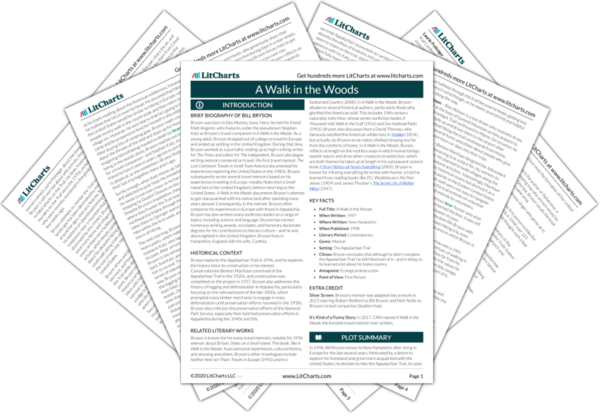Although many plants have natural defenses to threats like fungi, the rate at which human beings introduce threats to the forest far outpaces the defense mechanisms that plants have. Bryson implies here that human activity is throwing the ecosystem out of balance, once again reinforcing the idea that the most dangerous creatures in Appalachia are human beings. The beautiful views of farmland in Virginia are a rare treat for Bryson, and he wishes there were more environments like this along the Trail.
